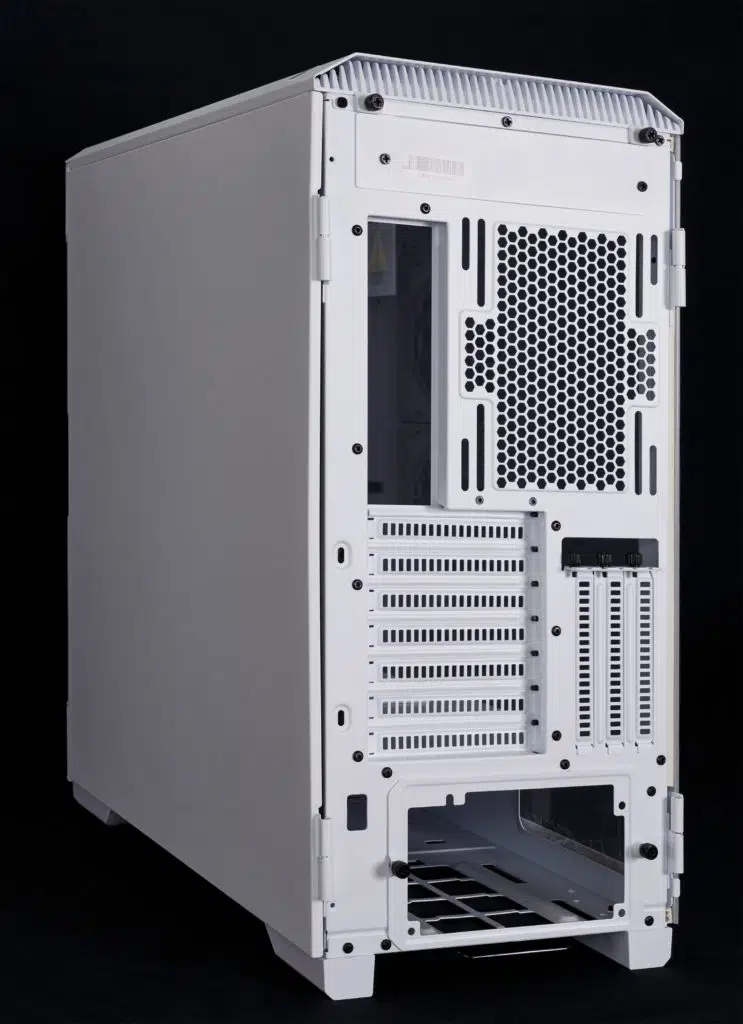Introduction
Phanteks Eclipse P600s has been a mainstay of high-end ATX builds for several years, and today we’re taking a look at the newly released Matte White model. The P600s lineup includes models with and without tempered glass side panels as well as black and gray color options in addition to the white model, which is new for 2022 and available for US$209 at Newegg and Amazon.
Speaking of ‘high-end’, when it comes to computer cases, can include a range of features in excess of what is needed for a typical build. For the P600s, this comes down to quite a wide range of features that we’ll go over that support Phanteks’ higher asking price.
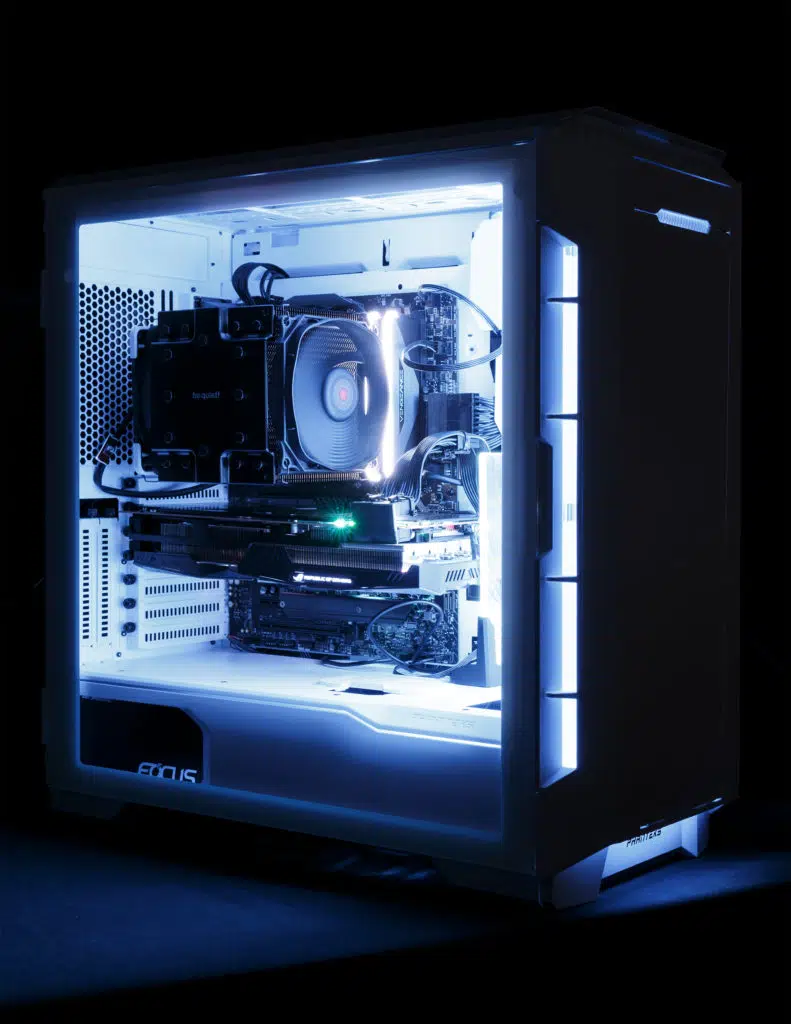
The Phanteks P600s Matte White Case
When compared to mid-ATX towers half its asking price, the Eclipse P600s stands out by offering excellent fit and finish, three effective 140mm ARGB (5v) fans up front, sound-dampened panels, and above all, a high degree of modularity and expandability.
In addition to supporting EATX motherboards up to 280mm / 11.1″ deep, Phanteks has stretched the P600s wide enough to allow for 140mm fans, three up front and two on the top, as well as taller 190mm CPU coolers, all while keeping ample room for cable management. Notably, Phanteks sells an ITX Upgrade Kit for US$19.99 that allows for an ITX motherboard to be installed in the top of the case, when used with one of their US$229 1000W or US$249 1200W Phanteks Revolt X power supplies designed for dual systems. Phanteks materials highlight the installation of an ITX system to power a capture card separately.
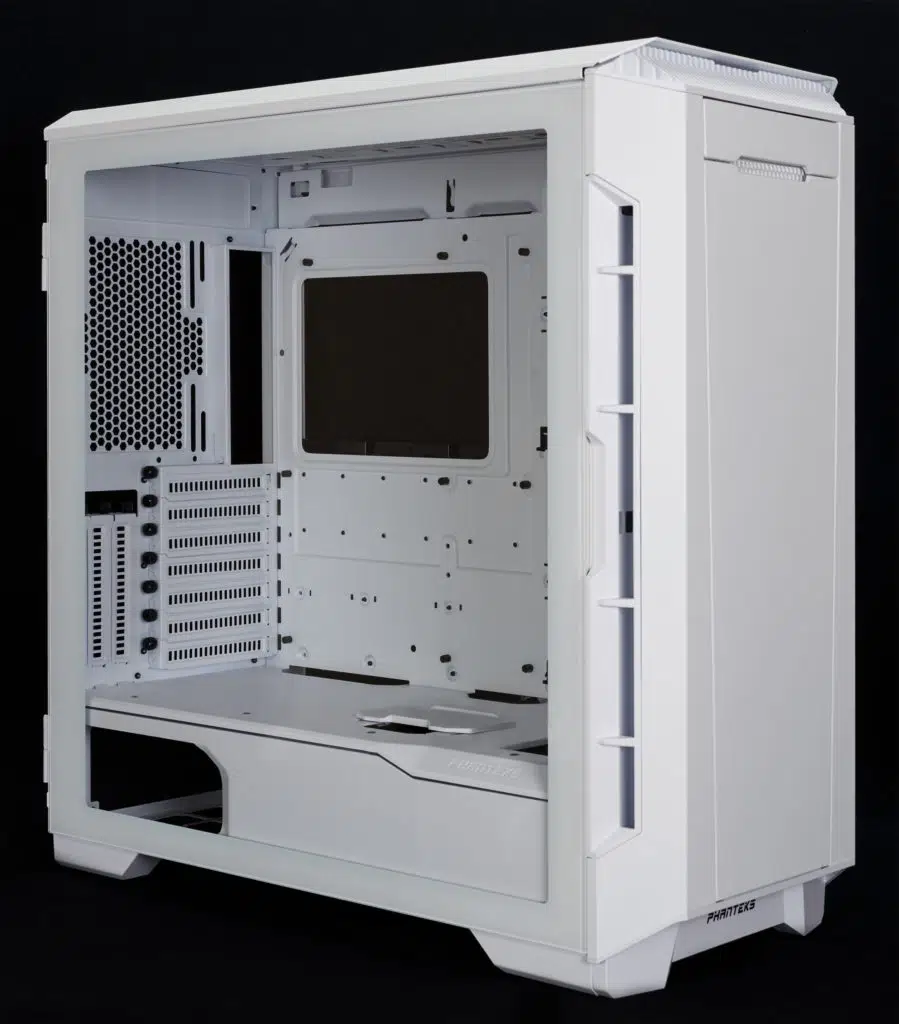
Tempered Glass Panel
Phanteks has fit the P600s with a hinged left panel fitted with a full-height tempered glass pane that provides an expansive view of the interior. As the case is taller than the average ATX case, the window is tall enough to show the top edge of the motherboard clearly.
The extra space at the top of the case is designed for several purposes, and with the case empty the panel that would expose the rear I/O of an ITX board to the rear of the case using an optional bracket sold by Phanteks on their retail site can be seen:
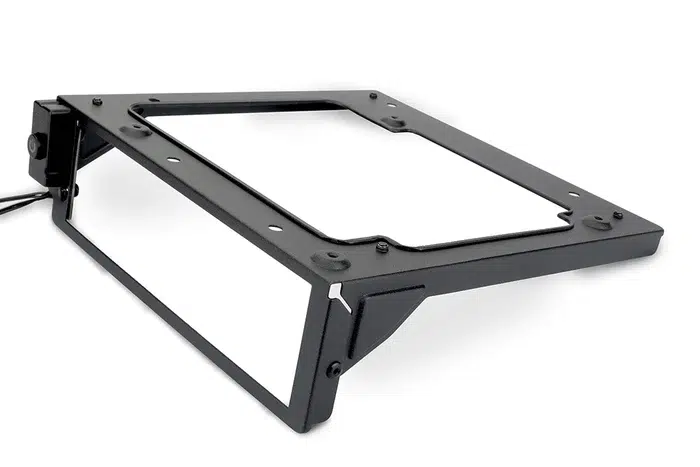
Of course, the space could just as easily be filled with a thick radiator and fans, too.
Front I/O Panel
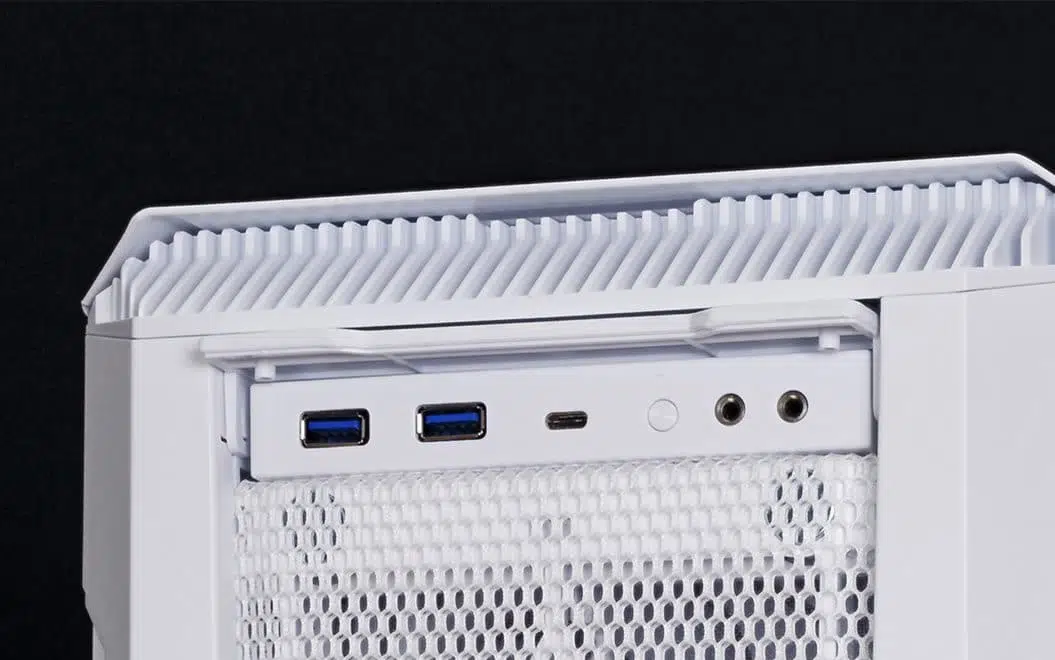
In keeping with a mostly clean front fascia, the P600s hides its user-facing I/O behind a flip-up panel. Present are two USB 3 ports, a USB-C port, separate headphone, and microphone ports, and the reset button. The power button however is located on the top of the case as seen below.

Case Front and Rear
Up front, Phanteks’ ‘hybrid’ solution balancing between silence and performance is on full display. Not only is the solid front cover removable, exposing both the high-airflow netting, and the fine mesh behind it, but both are removable and completely optional, along with the front cover. And for those interested in using the P600s to house a custom watercooling loop, there’s a position for a drain plug provided behind the front panel, which is easily removed and reinstalled.
Also worth noting is the sound-dampening material applied to the back of the front cover as well as the right side panel. These add weight and cost to the P600s, but they also work to mitigate any higher frequency noise generated by the components installed inside.



Around the back, the P600s looks like your typical ATX mid-tower, plus a little height for the second (ITX) system up top, and a little width to account for the 140mm fan support on the front, the top, and the rear. Another advantage of a slightly wider than the usual case is room for wider add-in cards, which Phanteks has leveraged into support for triple-width GPUs.
Also visible are the two captive thumbscrews for the top panel. Removal of the top panel enables direct access to the top fan bracket – itself removable, and featuring a fill port mount.

